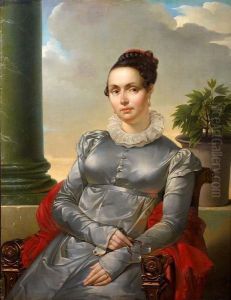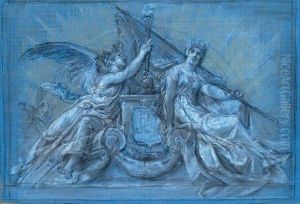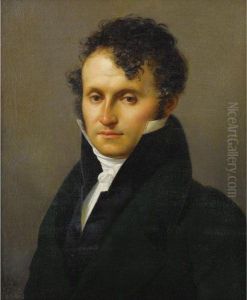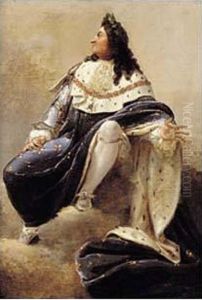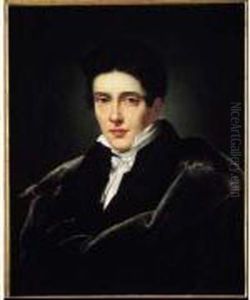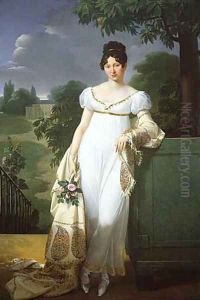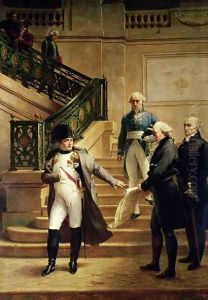Merry Joseph Blondel Paintings
Merry Joseph Blondel was a French Neoclassical history painter born on July 25, 1781, in Paris, France. He was a prominent figure in the early 19th century French art scene, contributing significantly to the Neoclassical movement, which sought to return to the ideals and style of classical antiquity. Blondel studied under the esteemed French painter Jean-Baptiste Regnault, and his early work reflected his mentor's influence, particularly in his use of clear lines and emphasis on classical harmony.
In 1803, Blondel won the Prix de Rome, a prestigious scholarship for art students, which allowed him to study at the French Academy in Rome. His time in Italy had a profound impact on his artistic development. He was deeply influenced by the works of Renaissance masters and ancient Roman art. During his stay in Rome, Blondel honed his skills and developed a style that combined the grandeur of Roman art with the elegance of the Renaissance.
Upon returning to France, Blondel quickly established himself as a leading history painter. He received numerous commissions for large-scale history paintings, which were popular during the Restoration period. His works were characterized by their grandiose compositions, attention to detail, and vivid use of color. Blondel's paintings often depicted scenes from ancient history, mythology, and the Bible, resonating with the Neoclassical taste of his time.
Blondel also participated in the decoration of several important public buildings in Paris. His contributions include works in the Louvre Palace, the Palace of Versailles, and the Luxembourg Palace. Among his well-known works are 'The Death of Louis XII' and 'The Baptism of Clovis'. His murals and ceiling paintings further cemented his reputation as an artist who could handle monumental projects with skill and creativity.
In addition to painting, Blondel was an accomplished teacher. He taught at the École des Beaux-Arts in Paris, where he influenced a generation of French artists. His teaching extended his impact on French art beyond his own works, as he imbued his students with the principles of Neoclassicism.
Blondel's career was marked by recognition and honors. He was awarded the Legion of Honor in 1824, and he became a member of the Académie des Beaux-Arts. His legacy is that of an artist who, through his commitment to classical ideals and his ability to adapt them to his own time, helped to define the aesthetic of an era.
Merry Joseph Blondel passed away on June 12, 1853, in Paris, leaving behind a body of work that continues to be appreciated for its historical significance and artistic merit. His paintings remain on display in many museums and public buildings, a testament to his enduring influence on French art and the Neoclassical movement.

